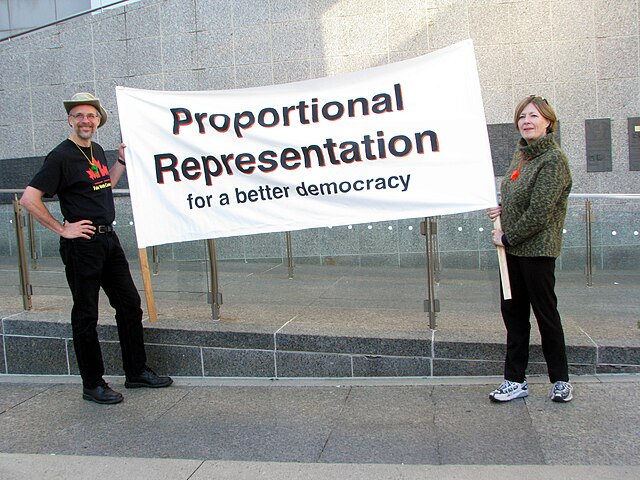Proportional representation
Proportional representation (PR) refers to any type of electoral system under which subgroups of an electorate are reflected proportionately in the elected body. The concept applies mainly to political divisions among voters. The essence of such systems is that all votes cast – or almost all votes cast – contribute to the result and are effectively used to help elect someone – not just a bare plurality or (exclusively) the majority – and that the system produces mixed, balanced representation reflecting how votes are cast.
Activists campaigning for proportional representation in Canada in September 2013
Image: Canada election 2015
A political party is an organization that coordinates candidates to compete in a particular country's elections. It is common for the members of a party to hold similar ideas about politics, and parties may promote specific ideological or policy goals.
The members of political parties, such as those of the Indian National Congress (pictured), coordinate to collectively achieve and use political power.
In A Block for the Wigs (1783), James Gillray caricatured Fox's return to power in a coalition with North. George III is the blockhead in the centre.
Political parties like the Romanian Communist Party can arise out of, or be closely connected to, existing segments of society, such as organizations of workers.
It is easier for voters to evaluate one simple list of policies for each party, like this platform for the United Australia Party, than to individually judge every single candidate.






